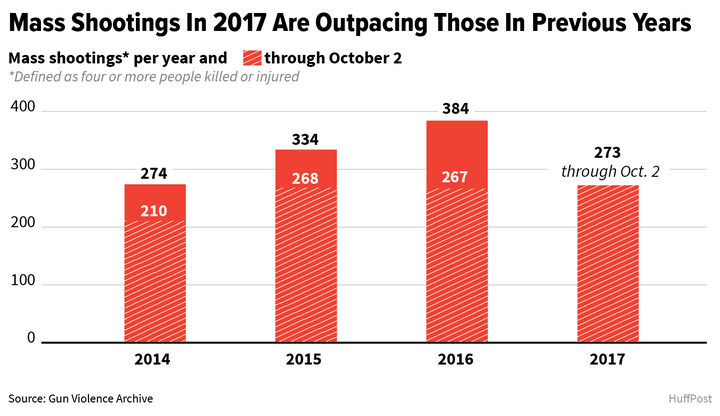The massacre in Las Vegas will spur a discussion about gun legislation, President Donald Trump said on Tuesday, but he offered no specific details about what that will entail.
“We’ll be talking about gun laws as times goes by,” Trump told reporters at the White House.
Should the president follow through on his pledge, he and members of Congress have a limited body of information on which to base policy decisions. That’s in part because of the infamous Dickey Amendment that Congress passed in 1996, which forbid the U.S. Centers for Disease Control and Prevention from work that would “advocate or promote gun control.”
Functionally, it led the agency to shy away from research into gun violence research altogether. And in the decades since the amendment took effect, such studies plummeted by 64 percent as of 2012, according to the JAMA Internal Medicine publication.
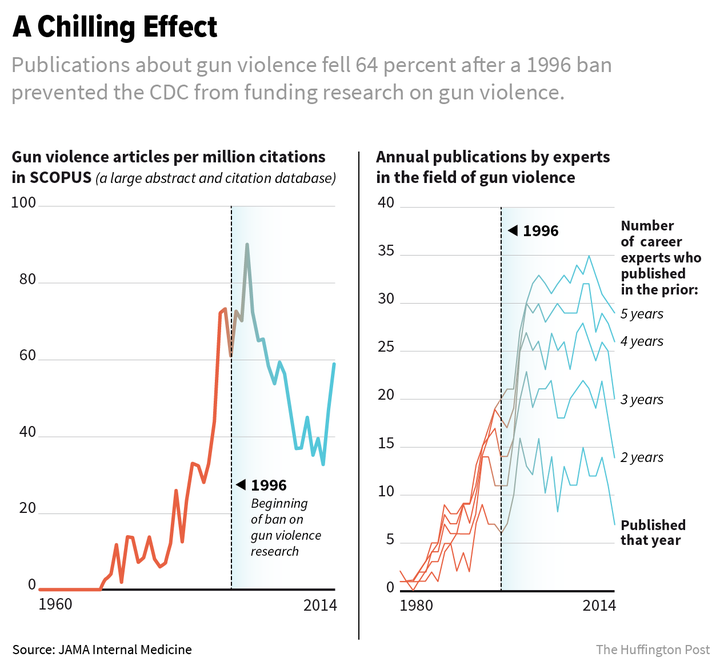
Jay Dickey, the former Republican representative from Arkansas who authored the amendment, died earlier this year, but not before publicly admitting that his measure had been a mistake.
“I wish we had started the proper research and kept it going all this time,” Dickey told HuffPost in 2015. “I have regrets.”
Today, just a handful of researchers regularly produce in-depth data on gun violence. From them and from groups like Everytown for Gun Safety, a gun violence prevention organization founded in 2014, some key details about gun violence have emerged.
The United States has the highest gun ownership rate in the world, and its citizens are 25 times more likely to be murdered by a gun than people in other developed countries. Mass shootings ― under at least one definition ― are on a pace to outstrip the figures for more recent years, but comprise a small percentage of America’s overall gun violence problem. Domestic violence shootings not only put women and children at risk, but also the lives of police officers. And on the whole, states with high firearm ownership rates tend to have more gun violence.
Here are seven graphs, maps and charts that illuminate the understudied landscape of gun violence in America:
1. White men over the age of 55 are most likely to own guns
A 2015 study published in the journal Injury Prevention that examined firearm owners found that they tend to be white males, married or divorced, with annual incomes of more than $25,000 and older than 55. While one in three Americans owns a gun, firearm ownership varies from state to state. Alaska has the highest gun ownership rate, Delaware the lowest, according to the medical publication BMJ.
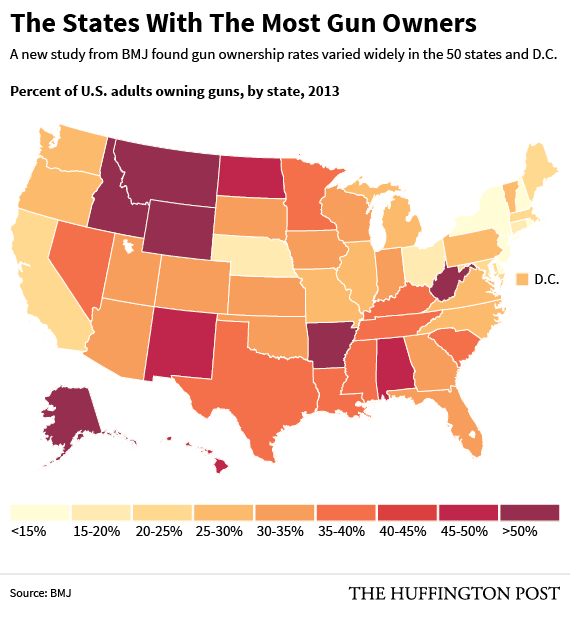
2. Living in a state with high gun ownership raises your risk of dying from a gun injury
States with higher gun ownership rates, such as Alaska, where more than 60 percent of residents own a gun, also tend to have more gun deaths. And while it’s hard to accurately account for firearm ownership, it’s estimated that there are 310 million guns in the U.S., almost enough to arm every man, woman and child in the county.
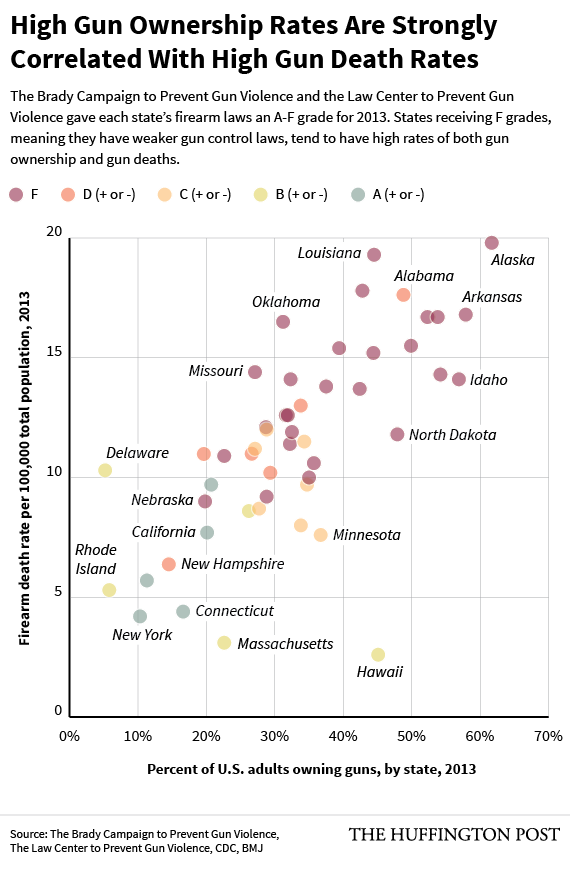
3. Police officers are more likely to be shot in heavily armed states
It’s not just civilians who are at higher risk of gun violence in states with high firearm ownership. Police officers are also more likely to be shot in those states, according to data from Everytown for Gun Safety. And despite the media attention that ambush-style attacks on law enforcement garner, it’s more common for officers who are shot in the line of duty to be serving a warrant or responding to domestic violence calls.
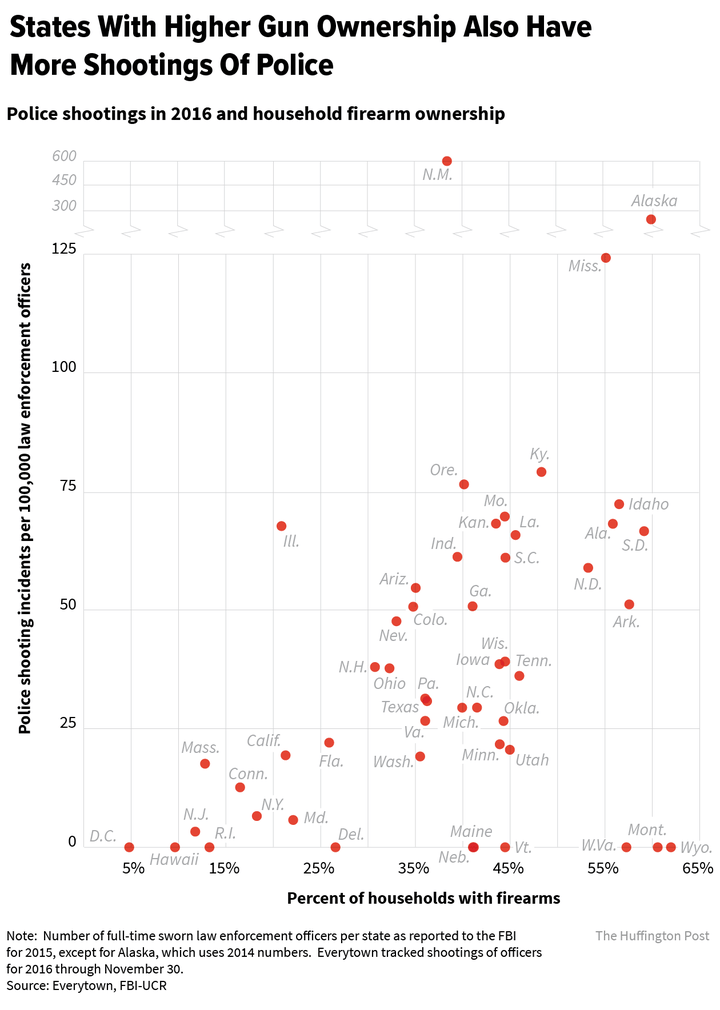
4. Fewer police officers are shot in states that require background checks to buy a handgun
Laws matter. Police officers were twice as likely to be shot in states without background check requirements for handgun sales in 2016, Everytown for Gun Safety found.
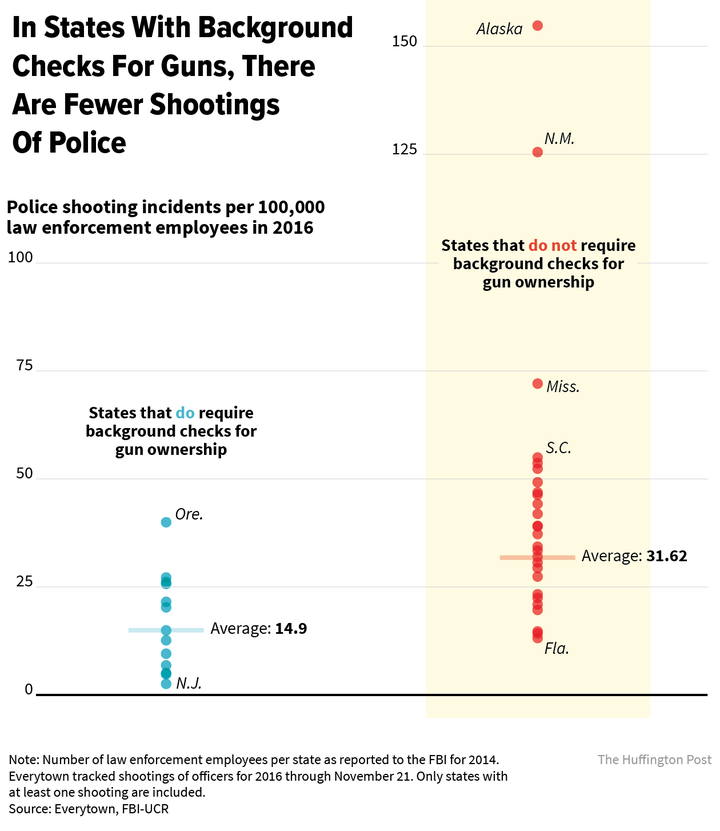
5. Most mass shootings are related to domestic or family violence
Tragedies like the massacres in Las Vegas and last year at a nightclub in Orlando, Florida, aren’t representative of the bulk of mass shootings in U.S. An analysis by Everytown of mass shootings between 2009-2016 (defined by the group as those cases in which at least four people are killed, not including the shooter) found that 54 percent were related to domestic or family violence.
“It’s clear that domestic violence continues to be a driver when it comes to mass shootings,” Sarah Tofte, research director for Everytown for Gun Safety previously told HuffPost.
In these shootings, women and children are disproportionately likely to be the victims. Of the seven mass shootings last year in which those killed included a family member or intimate partner of the perpetrator, 25 of those victims were children or adult women, only six were adult males. All of the shooters were adult men.
Prior to the Las Vegas massacre, the two deadliest mass shootings this year were reportedly committed by estranged husbands targeting their wives.
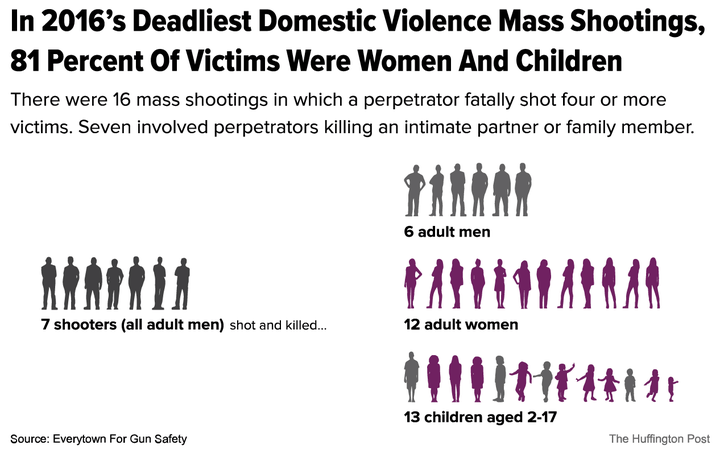
6. Many states don’t enforce the federal law prohibiting people with restraining orders from owning guns
The patchwork of state laws concerning domestic violence means that many abusers never give up their firearms. Though some state laws prohibit people with restraining orders stemming from domestic violence from buying weapons and strip them of their guns, many don’t. And without such state laws, the federal law on this front often goes unenforced. Women leaving relationships are at an elevated risk for domestic violence, which puts them in even more danger if their abuser is armed with a gun.
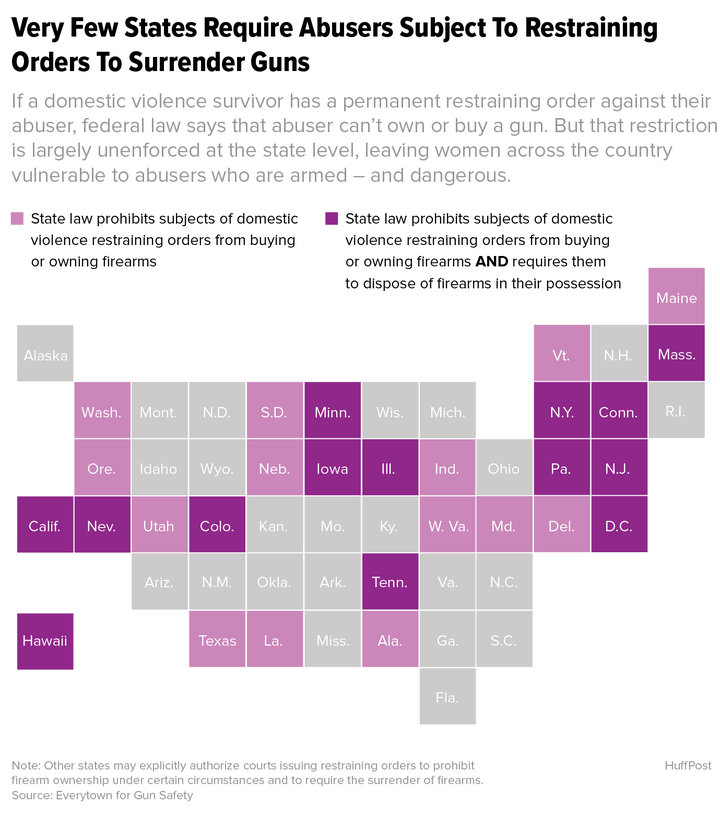
7. Mass shootings are rising, but that’s not the full story
When defined as cases in which at least four people are killed or injured, not including the shooter (a variation from the definition Everytown uses), mass shootings this year are running slightly ahead of their numbers in recent years. But though such attacks often prompt important discussions about addressing gun violence, it’s important to remember that of the 33,000 people who are killed by firearms every year, more than 21,000 of those deaths are suicides, according to the CDC.
